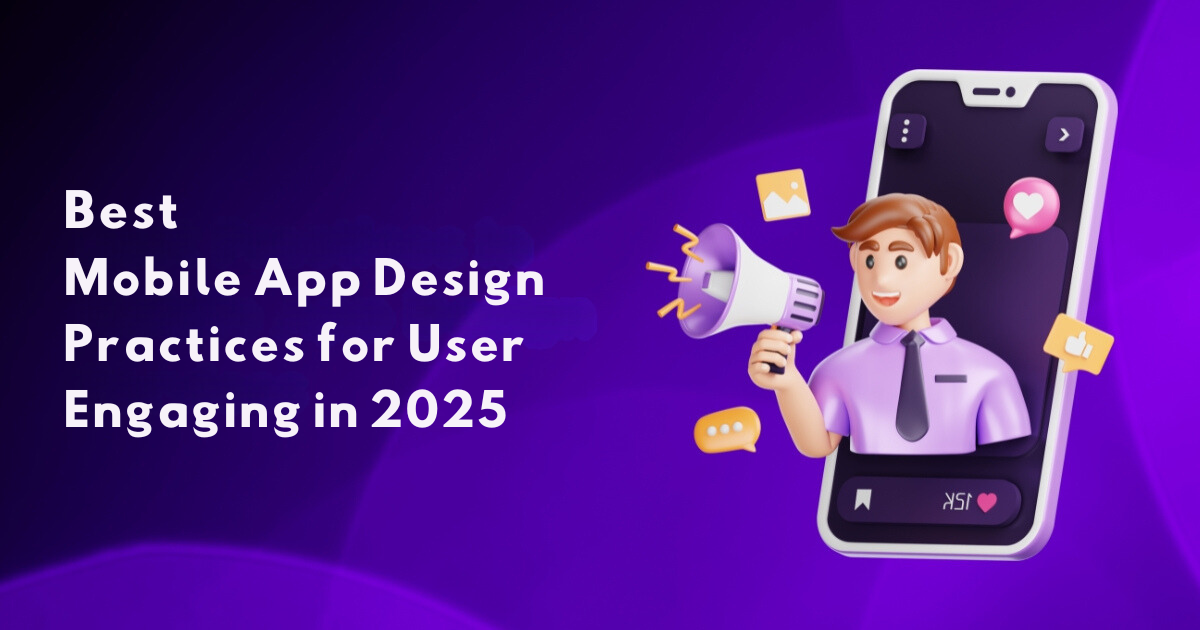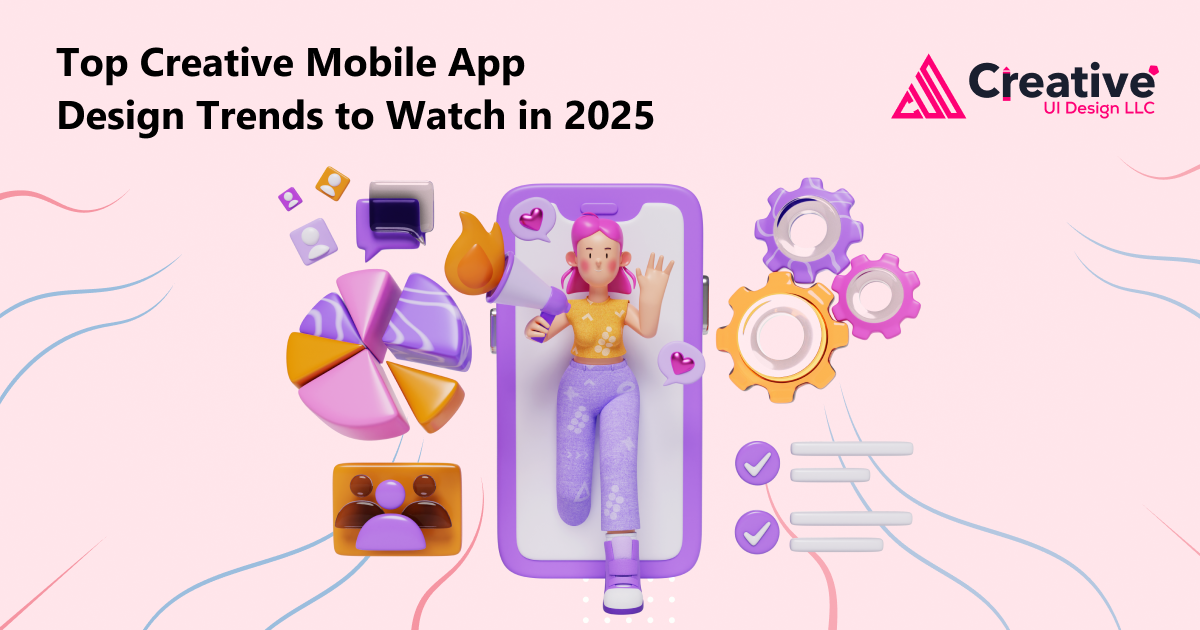The Growing Significance of Mobile App Design
Mobile Applications for portable devices have become a formidable part of life, bringing changes in communication, finance, shopping, learning, entertainment processes, etc. Today, apps are not only tools – apps are a core part of communication, connection, and performance of various activities. Prospects have hiked through greater dependence on the apps; therefore, the mobile app design has become more significant since it influences the user experience.
Mobile app design is not just about getting a logo and a perfect color scheme for the interface. It encompasses much more. With the number of applications growing every day, customers require steady, interactively pleasing, and enjoyable applications. Hence, the focus on the last level, known as the user-centric design, is oriented toward the end user. Brand interaction applications that provide continuous and comfortable interaction and have friendly interfaces can build customer loyalty and give brands competitive advantages in the market.
Understanding Mobile App Design Services
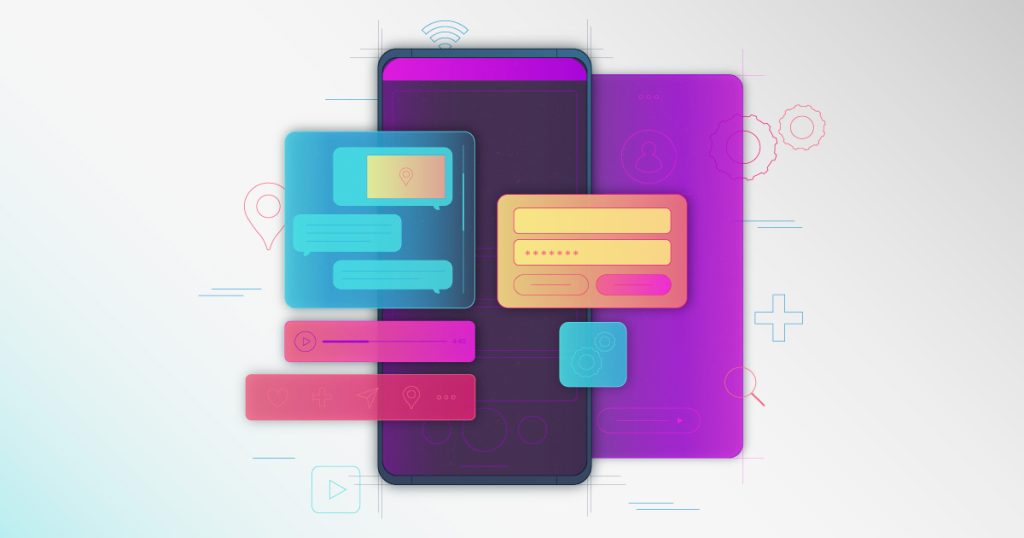
Mobile App Design Services include all the efforts and steps that need to be performed to develop effective and efficient mobile applications. These services include the UI design, all the way to the final stage of making sure the app runs trouble-free. These include the interface of the application/ software, the user experience design or UX design, the creation of prototypes and /or mock-ups of the application or software, and the testing sector.
Custom Mobile App Design makes this a very good idea for creating interesting experiences for people who use the services of the business. Such designs are based on the brand and its goals and target market – in other words, the app should be created specifically for the company’s clientele. Custom solutions help brand developers create applications for solving users’ problems and bring value to people while providing brand uniqueness in a highly competitive business environment. Also, in user-centered design, more customers are attracted to the business, hence improving their satisfaction.
Key Components of UI/UX Design in Mobile Apps
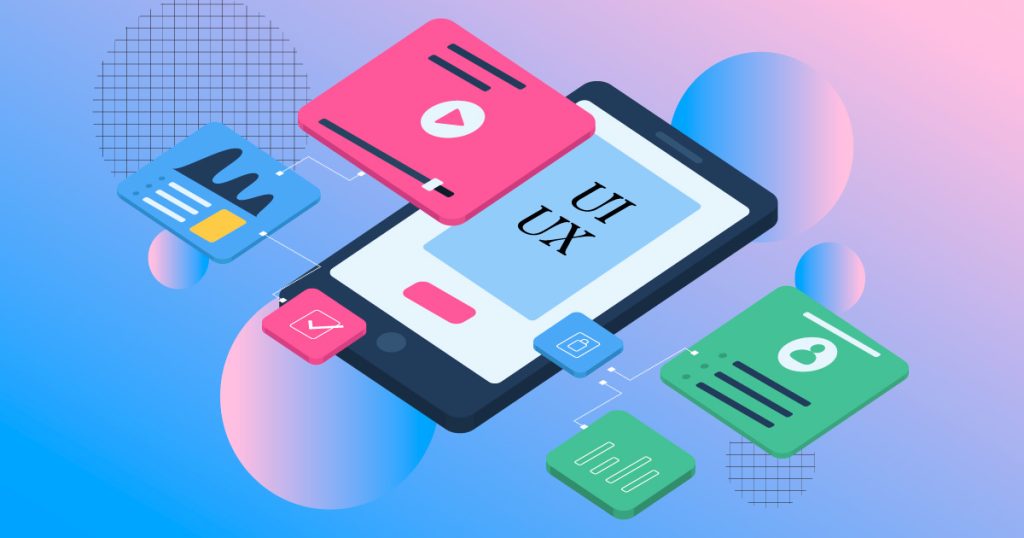
All products, and especially mobile applications, are built based on two key principles: UI (User Interface) and UX (User Experience). UI is concerned with look and feel, and it includes layout, color, typography, placement, etc., while UX is all about the usage and experience a user gets while using the app.
Here are a few key things to keep in mind for designing a great mobile app:
- Navigation: It should be simple and intuitive so users can easily navigate through the app without confusion.
- Responsiveness: The app must work well across various devices, adjusting seamlessly for different screen sizes and orientations.
- Aesthetics: Visually attractive designs engage users, making them more likely to use and enjoy the app.
- Simplicity: A less complicated interface is easier to use and saves the app user instances when they are bogged down by lots of choices.
- Consistency: The design schemes are coherent to support the users of the app in gaining more familiarity and increasing their understanding of how to use it.
- Clarity: Strong design means that the user grasps not only what the app is for and how one can navigate through it using the manifold options.
-
Design Tappable Buttons
One of the most frustrating issues for app users is tapping a button and missing it due to its size. Small touch targets make interaction difficult and negatively impact the user experience. While it might be tempting to minimize button sizes to save space, this compromises usability. To ensure a seamless user experience, aim for button sizes of at least 44×44 pt or 48×48 dp, as recommended by most operating systems.
-
Design for Accessibility
Accessibility is a key foundation of great app design. Design your app to be usable by everyone, accounting for various user scenarios. Consider that users may hold their smartphones with either hand or both, so the layout must be intuitive regardless of how the phone is held. Avoid placing buttons and critical elements in hard-to-reach areas, such as the top or bottom corners, which can lead to user frustration.
-
Simplify with One Action per Screen
Smartphone screens are limited in size, so it’s crucial to keep your design clear and simple. Instead of overwhelming users with multiple actions on a single screen, break down tasks into manageable steps. For example, in a hotel booking app, each step-selecting dates, choosing a location, and picking a hotel-should be on separate screens, ensuring an easy and seamless user journey.
-
Maintain a Clean and Uncluttered Design
Users avoid apps with crowded interfaces which often results in lost interest. Your design needs space along with proper layout for users to see essential elements. White spaces in applications enable greater readability while minimizing visual distractions so users can concentrate on their tasks giving them smoother interaction experiences.
-
Minimize Data Input
Users find it aggravating to complete long forms on their mobile devices. Shorten user account tracking by enabling account creation through Facebook or Google and Instagram logins. Through social credentials users can access their accounts simply by tapping once instead of typing out their information. Offering this option is a hallmark of great mobile app design.
-
Include Dark Mode
Dark mode is here to stay. It offers several benefits, including reduced eye strain, lower battery consumption, and better contrast for important elements. As many popular apps already include this feature, consider adding dark mode to your app to enhance user comfort and appeal to a wider audience.
-
Embrace Context-Oriented Design
Personalized user experiences are a growing trend in app design. A context-oriented design tailors the app’s interface and content based on user behavior and preferences. Features like adjustable font size, toggle options for dark mode, or enabling/disabling animations allow users to customize the interface to their needs, making the app more user-centric.
-
Design a User-Friendly Tab Bar
A tab bar is a key navigation tool in most apps, helping users quickly access different sections without overwhelming the interface. When using icons in place of text labels, ensure they are intuitive and easily recognizable. Familiar icons reduce confusion and enhance the overall user experience. However, always prioritize clarity to avoid misinterpretation.
- Optimize Images and Files: Optimise the image and files by using technologies that will help to lessen the file size without affecting the quality of images and files, which helps to increase the speed of the website.
- Caching: Cached data is to be used to enhance the cache response time; data that is frequently used should be stored locally.
- Efficient Coding: The application must also be optimized to reduce the amount of code necessary for the functioning of different interfaces, thus enhancing the application’s structural efficiency.
- Color Contrast: Ensure that your text and any picture-based items are easily distinguishable to users with poor vision.
- Font Scaling: Let users adjust the text size so it’s comfortable to read.
- Voice Commands and Haptic Feedback: There should be features like voice control or vibrations for anyone who can find gesture controls a little tough.
When the said elements are incorporated into a design, UI/UX design services helps raise the level of satisfaction and, in effect, makes the application more engaging for the brand present on the application.
Advantages of Custom Mobile App Design
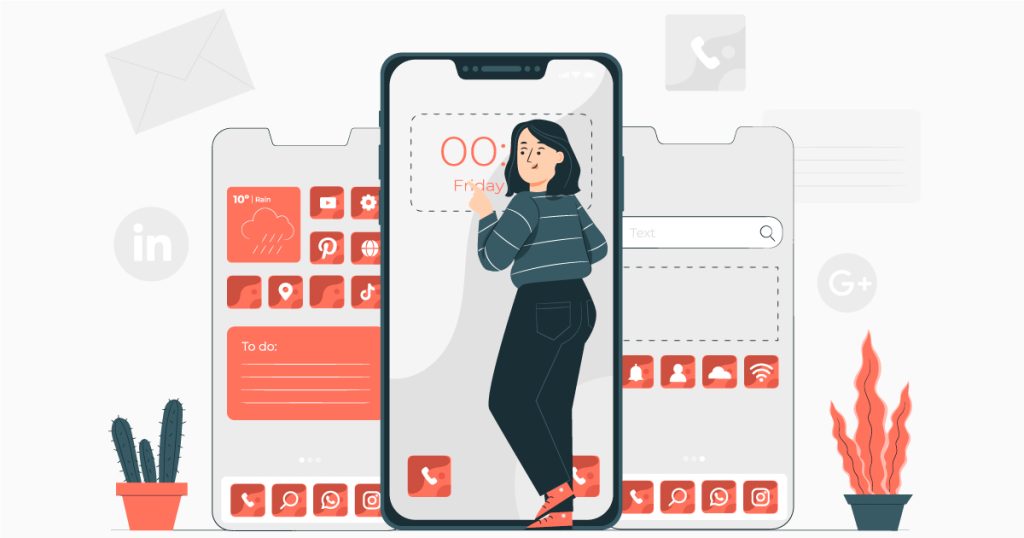
Custom mobile app design holds a lot of benefits for organizations that may be seeking to stand out in a rather congested market of business. That is one of the key strengths of the concept since the application can be adapted according to the target audience of a brand. Complete customer satisfaction and active engagement with content are other effects of such action.
Also, employing custom design means that brand consistency is checked throughout the entire brand image. The app simply becomes a part of the brand, which can serve to strengthen the brand image all together new to the users building that bond of trust and loyalty. Therefore, customer design brings longevity on the customer’s side because users are likely to remain loyal to an app that responds to their needs and provides them with customized services.
Core Principles of Mobile App Design Services
Successful mobile app design is built upon three key principles: The decision rules for procedures and appearance should be simple, consistent within the organization, and clear.
When these principles are used smartly, then gross results can be observed on the outlook index, and it will definitely raise the level of satisfaction that smart website users have towards a particular website.
Cross-Platform Mobile App Design: Building Universal Experiences
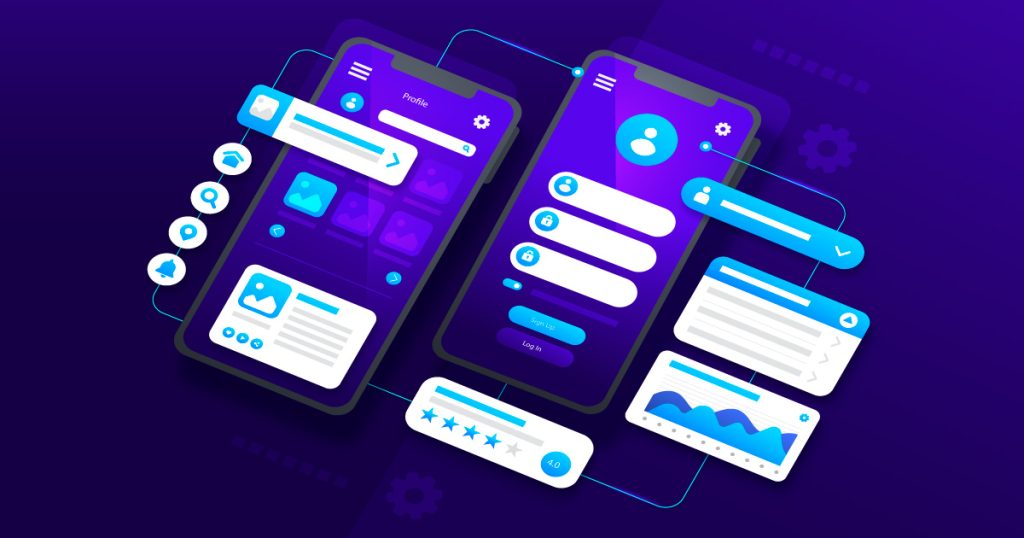
Cross-platform Mobile application integration enables companies to develop applications that will run on different operating systems, including iOS and Android systems. This approach means that the organization is able to make the application available to as many users as possible, irrespective of the device they own.
Therefore, the major benefit of cross-platform designing is efficiency. As such, modifications made in the application can also be implemented at once, without the need to develop two completely different ones, and therefore, this saves time and money. It also has the added advantage of forcing all users to obtain the updated versions to enable them to realize the improved makeovers, thereby standardizing the user experience.
Top Practices for UI/UX Design in Mobile Apps for 2025
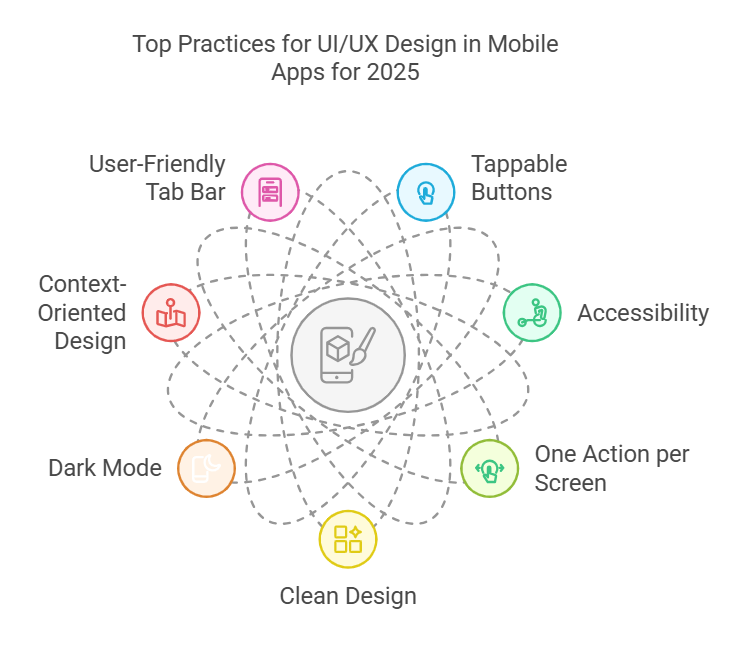
Optimizing Mobile App Design for Performance
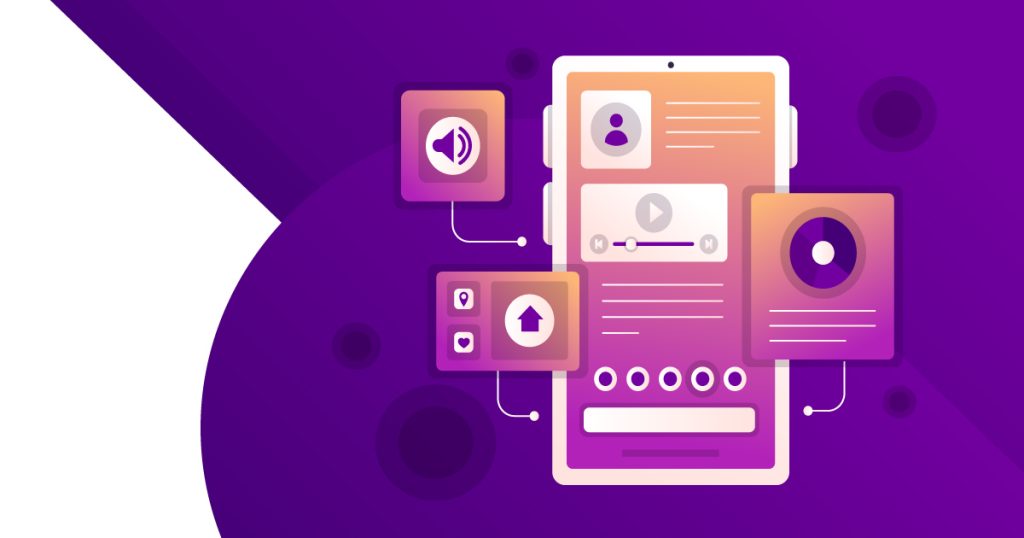
There are a number of factors that play an important role in mobile application success, but performance cannot be underestimated. Disengagement, long loading time, and response to an application can make the users close the app. To optimize performance:
Analytics can be made with Firebase and New Relic, which can be utilized to detect problems that need correction.
The Role of Prototyping and User Testing
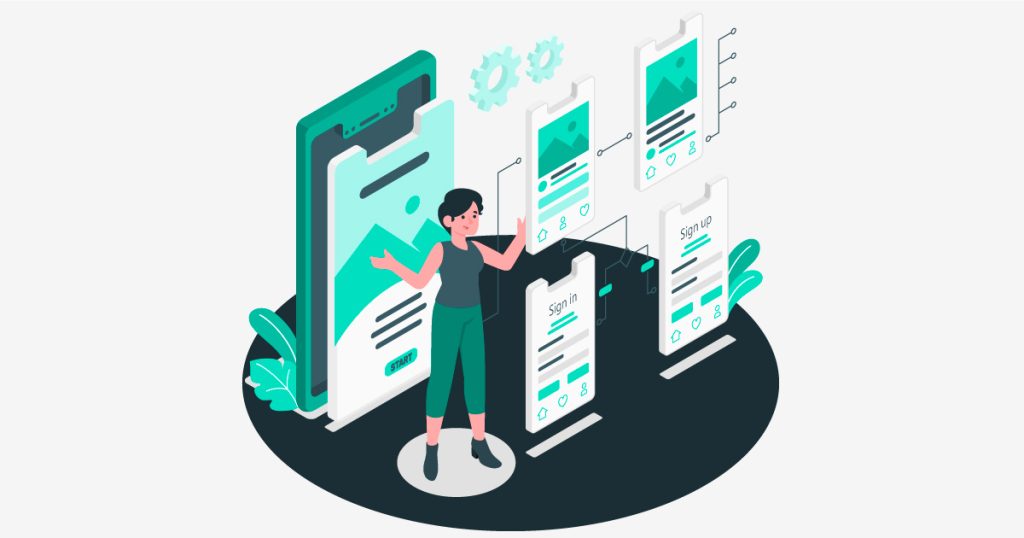
Prototyping is a crucial step in mobile app design. It’s basically creating a working model of the app before diving into full development. This helps designers and teams get a clear picture of how the app will look and work. Plus, it’s a great chance to gather early feedback from users to make sure the app hits the mark before it goes live.
User testing is equally important. It helps identify usability issues and areas for improvement by gathering feedback from real users. Frequent testing ensures that the app remains intuitive and meets user needs.
Designing for Accessibility in Mobile Apps
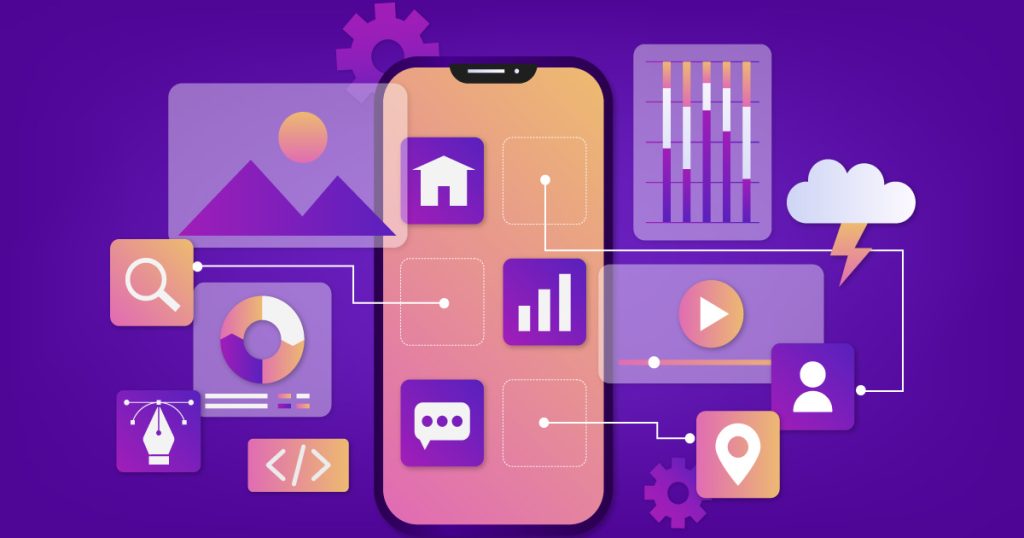
Accessibility for mobile apps is about making something understandable and usable for people with disabilities. Here are some key things to keep in mind:
Incorporating these features does not help only those targeted users who have certain disabilities but benefits all users of your app. But it also allows for a larger number of people to reach out!
How to Choose the Right Mobile App Design Services
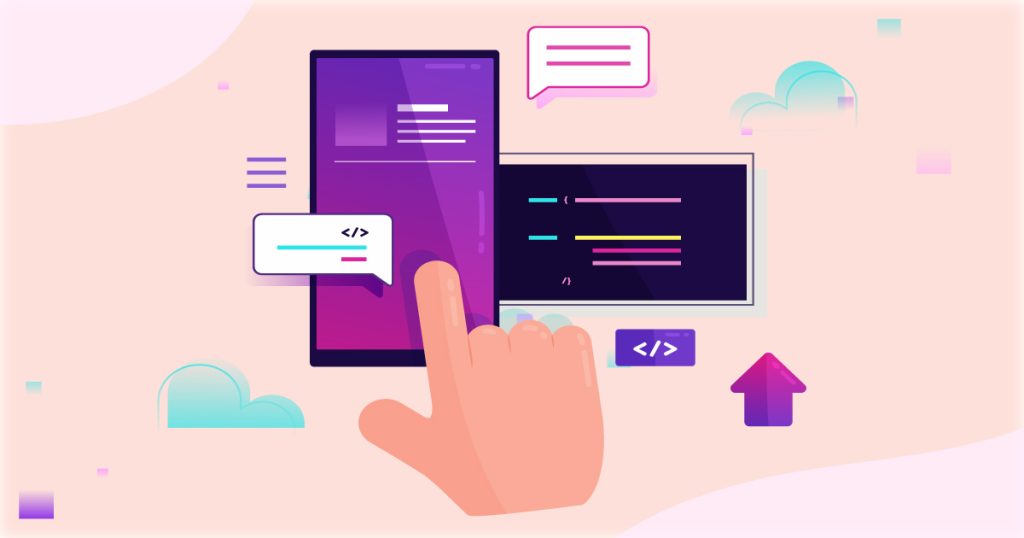
It’s important to choose dedicated mobile app designers who can ensure your project’s success. Look for a company with experience in your industry and expertise in the type of app you need, whether it’s a custom app or a cross-platform solution. Clear and open information sharing is essential for any successful business collaboration.
The Future of Mobile App Design
AI and AR are particularly central to the future trends of mobile apps and designing mobile apps. Such innovations will make it possible to use the products even more effectively by experiencing personalized and highly involved product interfaces. Moreover, there has been a progressive improvement in responsive design and adaptive layouts so that the applications can always be friendly and meaningful across different operating systems.
The importance of designs is becoming increasingly significant as new trends in mobile app design evolve; in order for businesses to stay relevant, they have to ensure that they develop the appearance of their mobile applications that will attract new customers as well as appeal to older users.
Unlock the power of exceptional mobile app design! Partner with us to create custom, user-friendly apps that elevate your brand, boost engagement, and drive your business forward. Contact us today!
What good is an idea if it remains an idea? Let's put efforts together to give it a look of Website or Mobile Application.
Let’s Start a discussion